
"Quality is crafted through the process."
Gloves are no longer mere tools.
This is why gloves that become an extension of the hand are favored by many professional baseball players. While times may change, the way a glove is fashioned stays exactly the same. With care given to each and every process, an image of the finished glove is held in the mind as it is checked by hand and carefully finished. Even today, Kishimoto continues to pursue that sense of oneness with the hand.
Glove Meister.
Kosaku Kishimoto

MEISTER'S SKILL
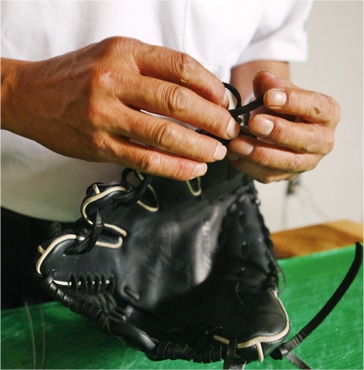
Each glove is different, depending on the user and their position. For example, even minor changes to where and how the laces are run through the glove change the finished form.
MEISTER'S TOOLS
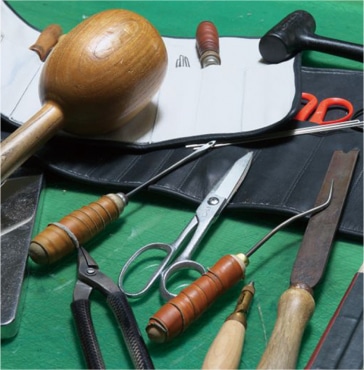
Various tools are used for different tasks when creating a glove. Broken in after many years, they are used in the delicate process of glove-making.
"Rather than self-satisfaction,
I want to see satisfaction in users.
The most important skill for a bat craftsman is a discerning eye for wood. The wood that serves as the material is never the same for any two bats. A craftsman selects the wood that meets the demands of each professional player. After that, craftsman and the wood before him face off in earnest.
Watching a player get a homerun or a hit with a bat he has created is his joy, says Nawa.
Bat Craftsman.
Tamio Nawa
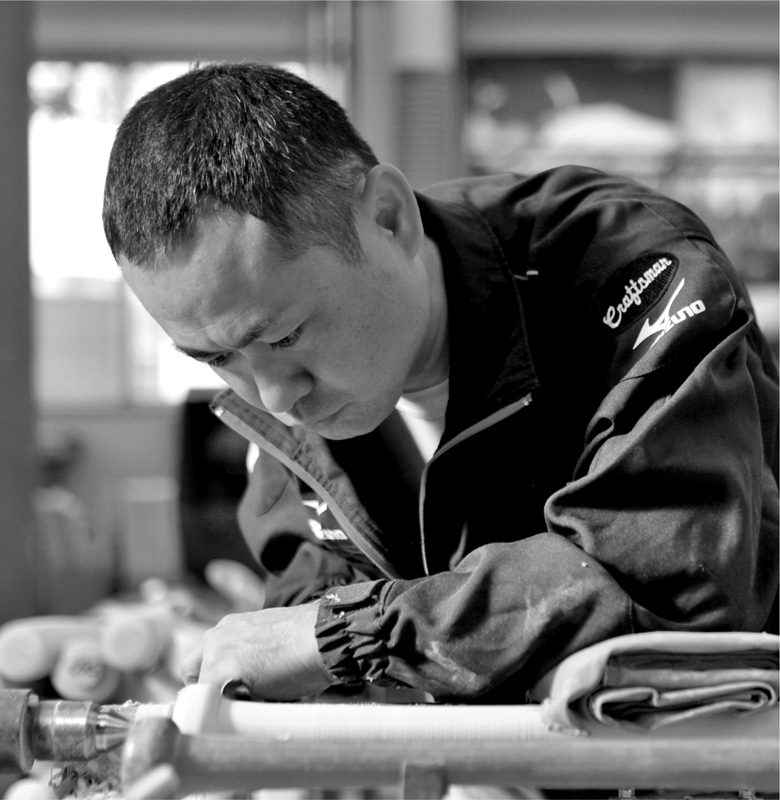
CRAFTSMAN'S SKILL
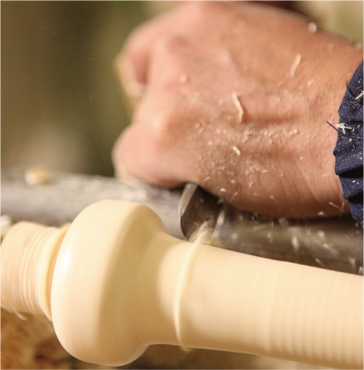
The rough cut of raw wood is fixed on a lathe, rotated and chiseled.
This is an expert skill that demands a physical, rather than mental reflexes.
CRAFTSMAN'S TOOL
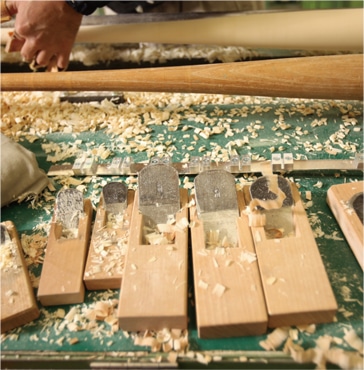
The basics of bat creation come down to the tools. A deviation of just 0.1 millimeters in the bat's grip will not be tolerated.
Multiple handmade planes and chisels are used as appropriate to fashion subtle curves in the blink of an eye.
